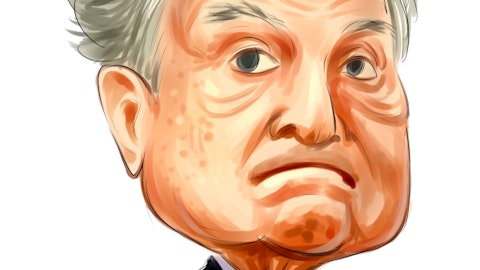Keith Weiss: Got it. Yes, that’s super helpful. And then just one clarification question. On Mailchimp, it looks like the revenues was basically flat, maybe down a little bit sequentially. I’m assuming there is a currency impact in there. Can you — is there like a constant currency number that we could see kind of like how it sequentially?
Sasan Goodarzi: Yes. It’s actually — it is in constant currency. I mean maybe, Michele, I’ll let you chime in here in a moment. But I think what I would say is we — when you look at our innovation and when you look at our customer uptick and the expansion revenue that we’re starting to see, it’s actually very much in line with what we would have expected because a lot of our innovation that is in place is actually now accelerating the growth of the business. Because remember, this business was run for cash flow and profitability, and now we’re running it for growth. And we’re actually quite pleased with the impact that we’re starting to see, and we would expect that to accelerate in the upcoming quarters. But Michelle, do you want to chime in on the currency version?
Michelle Clatterbuck: Yes. The only thing I would clarify is that Mailchimp actually sold at U.S. dollars, and so there isn’t a currency impact there for the international, even though 50% of their sales are outside the U.S.
Operator: Your next question will come from the line of Kash Rangan with Goldman Sachs. Please go ahead.
Kash Rangan: Congrats on the results. Sasan and Michelle, curious to get your perspective, we don’t like recessions, but this is a recession, maybe it’s a recession that we’ve all been anticipating. It’s most widely anticipated one. So what are the assumptions that you have incorporated in your soon you’re forecasting for the foreseeable future? I mean, is it an uptick in attrition or maybe the expansion rates come down a little bit? I’m just curious to get your thoughts on what you’ve dialed in with your current go around of trajections. And also, Sasan, if you could talk about payments. You clearly demoed at the analyst event, very, very impressive. Clearly, it’s got a lot of potential. What should we be expecting? What are you expecting in your payments business in the medium term to long term? What are your goals? Congrats.
Sasan Goodarzi: Yes. Thanks for the question, Kash. Just in terms of your question around assumptions, I think on Credit Karma, hopefully, what I just shared a moment ago resonated in that. We are assuming sort of further deterioration and conservatism in the back half of the year or the remainder of the year, I should say. Despite a lot of innovation that is still coming to market because we’re just — we’re making assumptions around unemployment going up, delinquency rates getting worse, which means that financial institutions, although we’re one of the last platforms they pull off of that they will be conservative in terms of their investment levels. So those are the assumptions that we’ve made for the remainder of the fiscal year for Credit Karma.
And for Small Business, a lot of the strength that we’re continuing to see is just — it’s a shift to digitization from folks that are already on our platform. So we have a lot of customers that are on our platform. If you remember, we used the figure of — there’s $2 trillion of invoices being managed on our platform, and we have over $100 million that is part of our — well over $100 million as part of our payments charge volume, which means we have a huge opportunity to penetrate that within our existing base. And I use that just as an illustrative example, Kash. To answer your question, we’re not making any assumptions around payments uptick because the macro environment will get better in the second half of the year. We’re actually assuming that a lot of the growth that we are seeing is just continuing shift to digitization from those that are on our platform.
And so we make customer acquisition assumptions. We make attrition assumptions. We’ll look at assumptions around payments and payroll that are really in context of how we feel about the environment going forward. Although we’re not seeing it within our SMB segment, we are assuming a level of conservatism as we think about the remainder of the year. And those are the assumptions that we’ve made for both Small Business and Credit Karma. And tax, again, tax is economically resilient. We pretty much make assumptions based on our penetration in the assisted segment. And that’s really — that and the total number of IRS returns is where our assumptions come from. And again, those are — that’s economically resilient. So that’s how we think about the guide going forward as we just reiterated.
In terms of payments, listen, payments is one of the areas that we’re the most excited about. If I had to pick a couple of areas, it’s Mailchimp, it’s payments and it’s what we’re doing to go upmarket and with QuickBooks Advanced and mid-market. And with payments, we spent four or five years building out all of our fraud and risk capabilities, all of our AI capabilities, and we’re just innovating very fast with that team. And a lot of the future around what we can do to digitize B2B around what’s possible with bill pay, that — those are yet to come and not even in our forecast going forward because we just believe that there’s so much room for penetration attached going forward. So hopefully, our say and payments has been to your liking, but we think our best is yet ahead of us.





